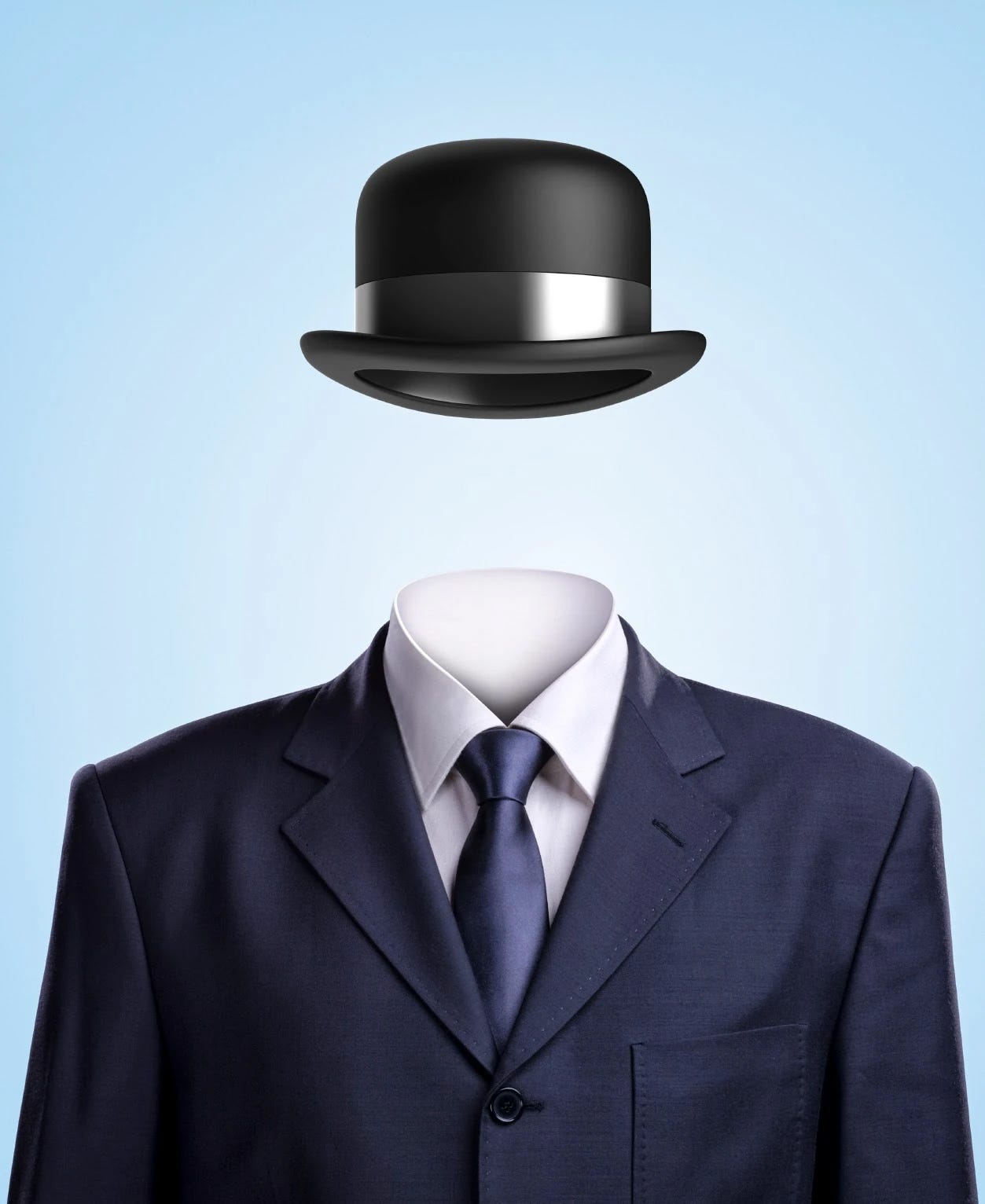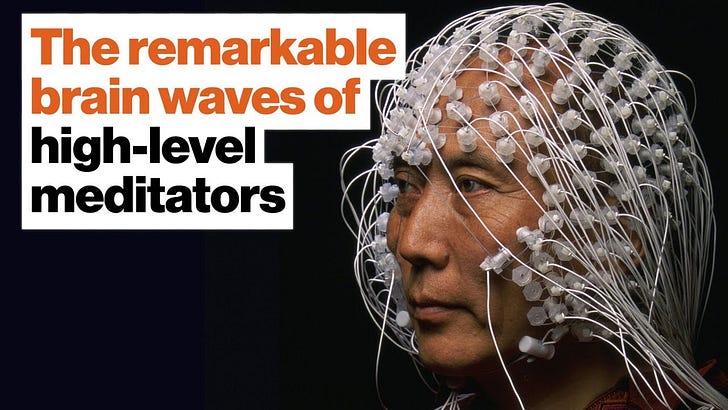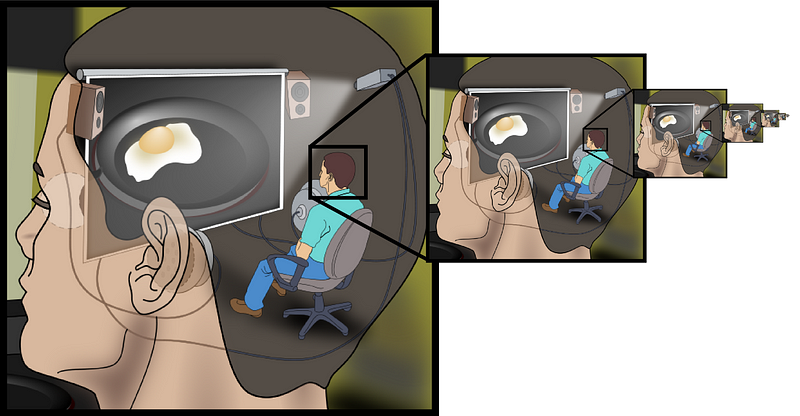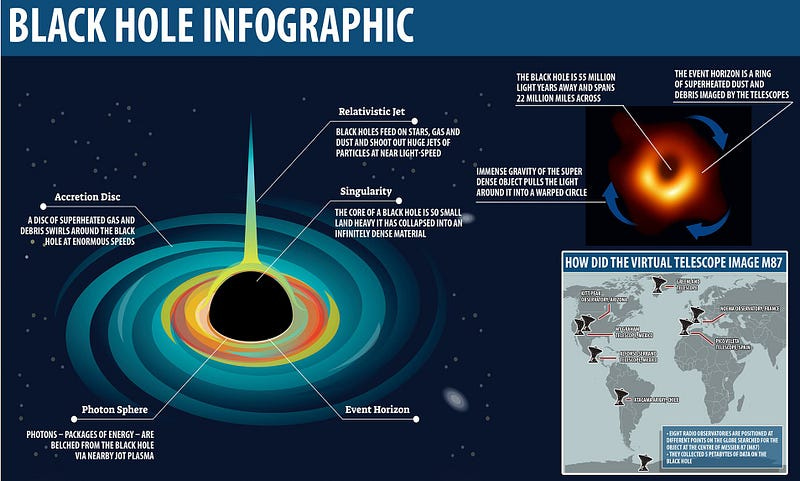Emptiness of Self: The Key to Buddhist Enlightenment
Buddhists say the self is an illusion. Modern neuroscience says you hallucinate your existence from one moment to the next.
What is the Self?
What do Buddhists mean when they say the self is an illusion?
The term is Anattā, my namesake.
Buddhists aren’t saying the self does not exist.
Buddhists aren’t saying you can ignore the self like it’s unreal.
Buddhists are saying that the self does not exist intrinsically, as a substantial and independent entity, independent of the mind and body that generates it.
Buddhists are saying you don’t have a soul, at least not in the way nearly everyone conceives of the idea.
There is no everlasting “you” that will carry on eternally after your body dies, certainly not one that carries your personal narrative identity from this life.
Awareness, Consciousness, and the Substantial Self.
At some point, while you were in your mother’s womb, an awareness came into existence. At first, this awareness was unfocused, but at some later point, this awareness perceived its own existence.
When raw awareness became aware of itself, consciousness came into existence. It was “Self” conscious.
In the moment consciousness perceived itself, it concluded, “I exist. I am real and substantial.
This feeling of being a substance and existing in the “real” world is intrinsic existence, and Buddhists consider this the primordial error.
The primary focus of all Buddhist practice is to correct this misperception.
This writing is intended to give you an intellectual understanding of this phenomenon.
If you can move that intellectual understanding down to your heart, or deeply into your mind, if you prefer that analogy, then you will experience enlightenment.
Bold claim?
Perhaps, but if you study and practice Buddhism, you will find that a recurring theme throughout.
Correcting the Primordial Error (Śūnyatā) is the entirety of Hinayana Buddhism.
Modern Neuroscience meets Ancient Buddhism
Prior to the late twentieth century’s advancements in Neuroscience, the concept of the self as an illusion with dependent arising was confined to Buddhist texts, generally mistranslated in the West.
Essentially, no one outside of a Buddhist monastery was even exposed to the idea and all its nuances.
Some Western Philosophers, starting with David Hume, discussed the basic concept, but it gained no credibility outside of a few academics who thought the idea was cool or figured they could make a name for themselves by popularizing it.
No Westerner actually embraced the idea or tried to live by it.
As Neuroscience progressed, particularly in the early twenty-first century, the idea became more mainstream.
In particular, the work of Anil Seth demonstrated that the self exists exactly as Buddhists posited.
Modern neuroscience confirms what the Buddha figured out 2,500 years ago.
Please watch at least the first two minutes of this video, five minutes even better.
(Anil Seth, I salute you! Everything I understand about neuroscience I owe to you. You are a Giant who’s shoulders I stand on.
So we have an ancient religion and modern neuroscience converging on an idea regarding the self.
But how can this be made more tangible?
Is this something you can experience for yourself?
Actually, yes, it is.
You can make this more than intellectual knowledge given to you by someone else.
You can know it in your own experience, and thereby really know it.
Let me show you how I learned the deepest truth of the self, firsthand.
Altered States: A Personal Exploration
Guided by my adventurous spirit, and inspired by the movie Altered States, I arranged my lifestyle so that I could spend an hour each day in a float tank, simply to experience complete sensory deprivation.
Yes, I really did that.
I had no idea what I was getting into.
After pushing through the distractions of Monkey Mind, I found a space of quiet where I could detach from the thoughts and observe them from afar.
A higher level of consciousness
I could observe a thought, like a cloud passing across the sky. In that state of observation, I realized I did nothing to generate that thought.
I couldn’t start it, stop it, or control it.
It seemed to think itself.
I wondered if this phenomenon doesn’t behave as if I am doing it, then perhaps, these thoughts are not me.
What did that make me then?
I didn’t know, but knew it made me something other than my thoughts.
I had found a higher level of consciousness. Not in an intellectual, conceptual way, but in my direct experience.
I found other interesting things too.
Supported by modern neuroscience, let me take you on a brief tour of the deepest recesses of your mind.
Parallel versus Serial processing
Your brain is a powerful parallel processor.
It processes thousands upon thousands of feelings and thoughts simultaneously, all day, and all night when you are not in Delta sleep.
Your consciousness is a serial processor working on top of the parallel one.
Consciousness presents the most important (highly emotionally charged) of these parallel ideas to the perceptual field that “You” identify with.
This presentation is sequential; thus you experience a “stream of consciousness.”
Why is this important?
Because 99% or more of your mental activity is happening behind the scenes, beneath the level of your conscious awareness.
These feelings and thoughts motivate most of your behavior and determine your moods.
It’s perilous to ignore what’s happening in your subconscious mind.
Moody Blues
Your mood is the sum total of the feelings being generated by your mind’s processing every thought, simultaneously, all the time.
If your mind is full of negative thoughts generating disturbing feelings, it drags down your mood.
It can make you feel terrible.
Have you ever been in a funk where you seem to emotionally vacillate between feeling a bit down and feeling really depressed?
Woody Allen said, “Most of the time I don’t have much fun. The rest of the time I don’t have any fun at all.”
That pretty much sums it up.
That is the ordinary existence for anyone who doesn’t employ mental rituals to alter their mood.
Weeding the garden of my mind
When I first started meditating in the float tank, I had no particular agenda other than to see what would happen, similar to John C. Lilly, the inventor of the float tank.
What I discovered frightened me.
There is an unfathomable amount of garbage fermenting in the subconscious mind.
When I discovered the reality of my own mind, I suddenly became highly motivated to clean it up.
Once I realized I had thousands of poisonous thoughts taking root in my mind, I knew I had to do something.
Fortunately, I had been previously exposed to Lamrim, so I knew of a method for weeding my mental garden.
I devoted several hundred hours to practicing it.
It works.
The Voices in My Head
In the many, many hours of practice and focused awareness, I learned to parse the feelings in my subconscious mind and hear their voices. A casual reader might conclude I am psychotic, hallucinating my reality.
I am.
The consensus of modern neuroscience says I’m hallucinating Me.
This video is worth watching all the way through, many times over to absorb it’s Truth.
When you read my descriptions of voices in my mind, these aren’t the loud, insistent voices of schizophrenia.
The mind processes feelings more than thoughts.
These feelings can be associated with voice, but often, it takes concentration on aptness to match voice to feeling.
Side note: Broca’s area of the brain is your aptness processor, your brain’s thesaurus. I learned that observing my austistic son, and confirmed it in my meditations. Broca’s area allows you to match any symbolic language to the feelings in your subconscious mind.
I can give voice to feelings if I can parse their effect from the chorus of feelings and thoughts in my mind.
It takes careful, mindful observation.
But I have no special gift. Anyone can learn this with enough time and focused concentration.
Existing as a disembodied mind in a float tank free from distractions certainly helps.
Me, Myself, and I
I no longer identified with my feelings and thoughts, but this realization only took me so far.
I knew what I was not, and that’s helpful information, but it didn’t really show me who or what I feel I am.
What made me, me, and not someone else?
The Act of Selfing
This is an area where the conventions of English fail us. Our minds are taught to instinctively think in terms of actors and actions, nouns and verbs.
For every act, there is an actor; for every effect, there is a cause; so the mind conceives of the “I” as something real and substantial, a detectable nugget that might show up in a science experiment.
That isn’t how I exist. There is no substantial self.
This may come as a shock to you, but you don’t exist in a substantive, “real” way at all.
In English, when we refer to an action as an actor, we use Gerunds.
We take an action, a verb, and we press it into service as an object, a noun.
That’s what you are: an action, a process, a construct of your mind.
You’re a Gerund.
You’re Selfing.
This video is quite long, but it will explain to you exactly how you exist, grounded in modern neuroscience.
You and I exist as a field of perceptual awareness created by our brains and bodies.
Our body’s central nervous system sends signals to our brains, where it’s brought together as a real-time simulation, or best guess at conditions in the outside world.
It feels like the Inner Theater, but no Homunculus spoils the party.
Binding Action in the Brain
In an evolutionary environment where split-second decisions determine life and death, the mind can’t take time to hold a committee meeting to determine a course of action all our senses can agree upon.
If you were a mouse that needed to avoid a silent owl gliding through the sky, it would be life-ending to have the mind get a signal from the eyes that says “run” and a signal from the ears that says “no worries, keep eating” with no way to sort out what to do.
A creature without binding action would constantly respond to false signals from every sense, expending needless energy.
The calorie cost would likely result in starvation and death.
The perceptual field of awareness
The binding action in the brain creates a perceptual field of awareness that encompasses all your sense data, with the gaps filled in by your mind’s expectations.
Most people identify with their perceptual field as the self.
My perceptual field is me.
Your perceptual field is you.
When that information goes in and generates that perceptual field, the information flow is only one way.
You and I can’t share perceptual fields. I can’t directly know your experience.
My mind is unknowable to you. An Ultimate Divide exists between your subjective experience and the outside, objective world.
Subjective experience can never be shared. You can’t know What it’s like to be a bat or another human being.
It’s like the information event horizon of a black hole; data only goes one way.
At the information event horizon of a black hole, whatever enters never returns.
We have no possible way of testing what happens beyond this barrier because no matter what test we run, no information to gather and analyze is ever forthcoming from the other side.
A bit like death.
Stop Selfing. Game Over.
You are in every way dependent upon your brain and body for your existence. Without them, no perceptual field is generated, and no selfing occurs.
Buddhists call this dependant arising.
This has a profound implication: Selfing doesn’t occur forever.
Selfing requires a brain and body in order to exist. When your body and brain fail, you cease to exist.
For an afterlife to be real, the ghost in our bio-machine must persist in some form that simulates body consciousness after death.
Which body do you get? A healthy, robust one of your youth? A decrepit and deteriorated body of old age?
Your perception of reality depends on the brain and body, and at death, you no longer have either one.
This idea frightens some people, but if you reflect on it more deeply, it shouldn’t be so troubling on a personal level.
When my brain no longer generates consciousness, I am dead — but I won’t know it.
If it’s cold in the grave, I won’t be there to feel its sting.
I will no longer exist.
Selfing stops.
There won’t be lasting weeping and gnashing of teeth.
Some people become really distressed about this, believing it is contrary to their spiritual or religious beliefs, but I find it comforting.
Very comforting.
There is an end to suffering—at least in this life.
I hope you find comfort in that too.
Buddhist Afterlife
Some schools of Buddhism posit an afterlife. Pure Land Buddhism imagines a place of pure mind where people are reborn without any mental impurities.
Of course, in order to get there, the practitioner must achieve a pure mind in this life, which is rewarding in itself.
Mahayana Buddhism, as practiced in Tibet posits a Very Subtle Mind as the repository of Karma, a useful convention for explaining natural differences we are born with.
The self, the narrative experience encompassing everything an individual thinks and believes, does not pass from one life to the next.
One master joked, “What continues from one life to the next is mostly our bad habits.”
Realistically, any speculation of what lies beyond is mental masturbation, the favorite pastime of philosophers.
It’s both pointless and funny.
Fundamental Truth of the Mind
You are free to believe whatever you want, assuming it doesn’t contradict some verifiable objective reality (and sometimes even if it does.)
Every belief in your head begins as a seed planted in objective body reality.
Sense information from the outside world enters your awareness as data.
From there, you have complete control to interpret the meaning of that fact.
There is no intrinsic meaning—no one correct interpretation that you must accept.
This is what Buddhists refer to as Emptiness of Meaning, also part of Anattā or Śūnyatā. Enlightened masters realize the empty nature of both the self and all phenomena.
For Western thinkers, this is the key insight from Victor Frankl’s Man’s Search for Meaning.
Victor Frankl (1905–1997), You came first. Your Clear Vision Shines in Man’s Search for Meaning. Your Wisdom Guides me.
The Self Is a Narrative.
So what am I, and what are you?
A bundle of thoughts.
You are your life’s narrative, a story.
You are an evolving narrative. Each day you write a new chapter, add to yourself, and refine your beliefs.
Nothing in your mind is cast in stone. Nothing in your narrative can’t be rewritten. You can reinterpret any event at any time, change your narrative, and change who you are.
This process continues day after day until it doesn’t.
The end.
Earlier in this post, I said you were a perceptual field, but that isn’t accurate either. That is grasping at consciousness.
Anything you identify with is not you.
You are no self, Anattā. And so am I.
~~wink~~
Anatta











